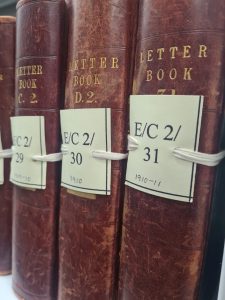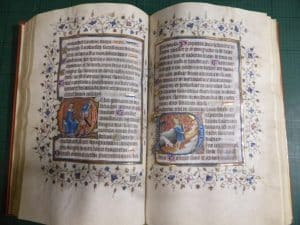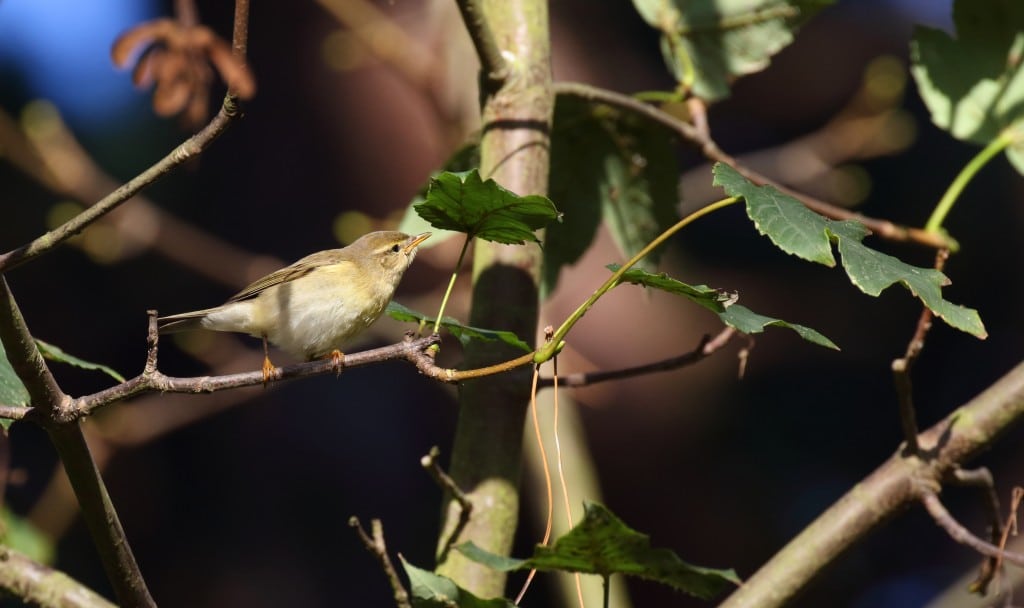
Far Eastern Travellers
November 7, 2018 | Learning | 7 minute read
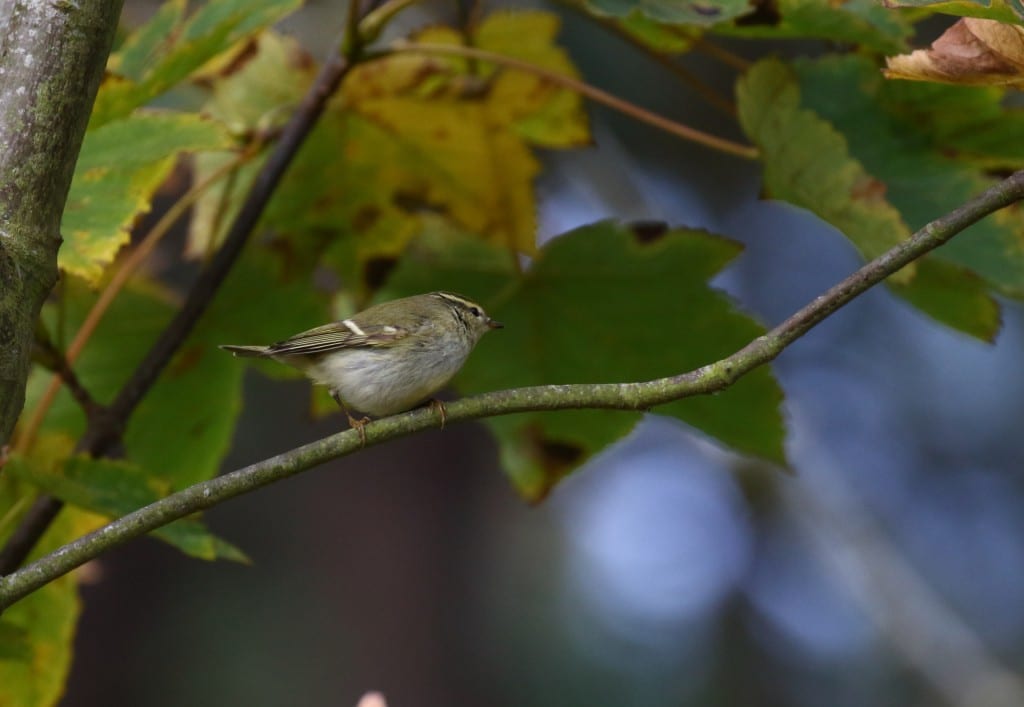
The Yellow-browed Warbler, a tiny migrant bird that flies here all the way from Siberia
The autumn is a time of great change in the natural world. As the leaves of the deciduous trees all transform from fading green to vibrant oranges and yellows so the signal is in place that summer has gone and winter is on its way. The Swifts that were screaming over our roof tops and the House Martins that made their temporary home along the eaves are now a fading memory of a summer gone. Even the Swallows that lined the overhead cables are on now on their way south to a warmer winter. Whilst autumn might be to some a sad time as such cheery summer avian sights are gone, to others it is a time of great excitement. If winds blow from an easterly quarter so Norfolk can often be alive with migrant song birds. Some might only be from the near continent or Scandinavia that like our departed Swallows are also heading south but others might come from as far afield as the far east of Russia and Siberia.
One species we truly associate with late autumn at Holkham is the Yellow-browed Warbler. It is a tiny species, barely 10cm long and weighing anything up to nine grams, slightly larger than our Goldcrest; Europe’s smallest bird. Miraculously for a bird so small it migrates here over a distance of over 3000 miles from nesting grounds in the Siberian taiga forests. Its normal wintering range takes in much of south-east Asia although each October varying numbers reach the UK. Whether this is by accident or part of a regular westerly wintering movement is very much open to conjecture. What we do know is that there are seemingly more and more arriving each year to the UK and here at Holkham we always get our fair share. The attraction here is the three mile length of mixed woodland we call the Meales, an integral part of the reserve. Here a mixture of birch, willow, oak and sycamore line the southern edge of the pine wood. The southern aspect offers a home for dwindling numbers of insects in the autumn that are ravenously sought after by these tiny long distance travellers. With Holkham being on the coast it is often the first land fall these warblers make after crossing the North Sea, offering them food and shelter before they re-orientate and re-commence their migration.
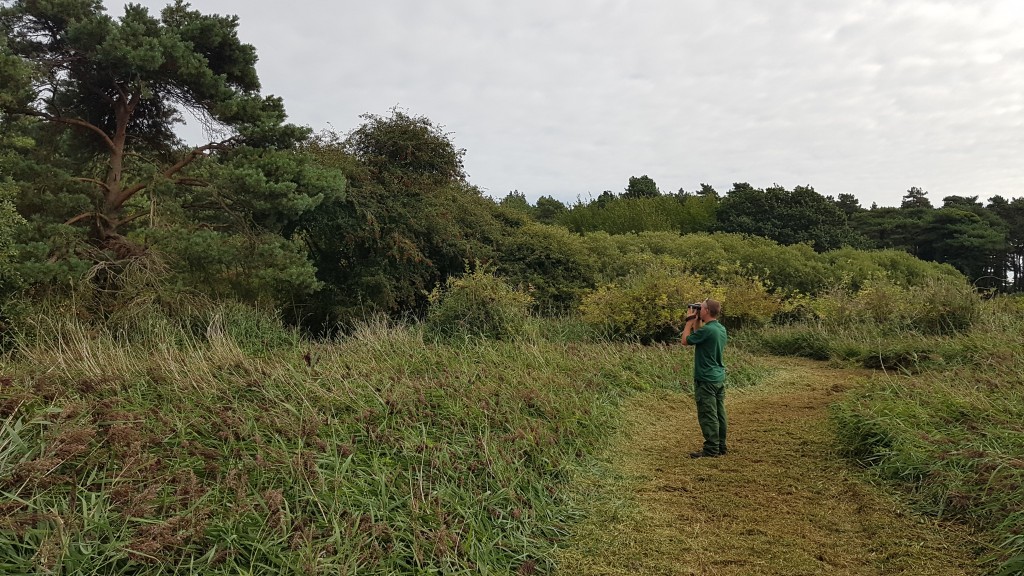
One of the popular autumn Birdwatching trails at Holkham Meales; the mixture of deciduous trees and scrub make it the ideal spot for watching migrant warblers
Yellow-browed Warblers are exquisite little birds. They are basically an olive green colour above and a gleaming silky off white below. What sets them apart from the more familiar Chiffchaffs and Willow Warblers (which nest here at Holkham) to which they are related are two delicate yellowy white bars on each of their wings and a similar slash of colour above their eyes, their ‘yellow-brows’ which give them their name. Getting a good look at one can be far from easy. They are ever restless, moving through the foliage at lightning fast speed, pausing briefly to glean insects from below leaves or hovering to similarly pick flies from the air. More often than not they will be in amongst roving flocks of our resident tits, Blues, Coal, Great and Long-tails. It is safety in numbers for those species as they fly from tree to tree in search of food. What makes a Yellow-browed Warbler easier to find is the distinctive call it utters, a strident ‘su-eeep’ that is always pleasing to the ear. Once learnt it is one of those sounds of nature that never fails to set the heart racing. Patience and luck are then required to see the actual bird and if a good view is gained you will be fortunate to witness not only a delightful looking bird but considering the journey it has made, one of the marvels of nature.

The Yellow-browed Warbler is instantly recognisable due to its small size, olive plumage and striking wing bars and stripe over its eye.

The Willow Warbler, a common breeding bird of the UK and a near relative of the Yellow-browed Warbler. Here it can be seen gleaning tiny aphids and spiders from the underside of sycamore leaves; a vital food source for migrants at Holkham
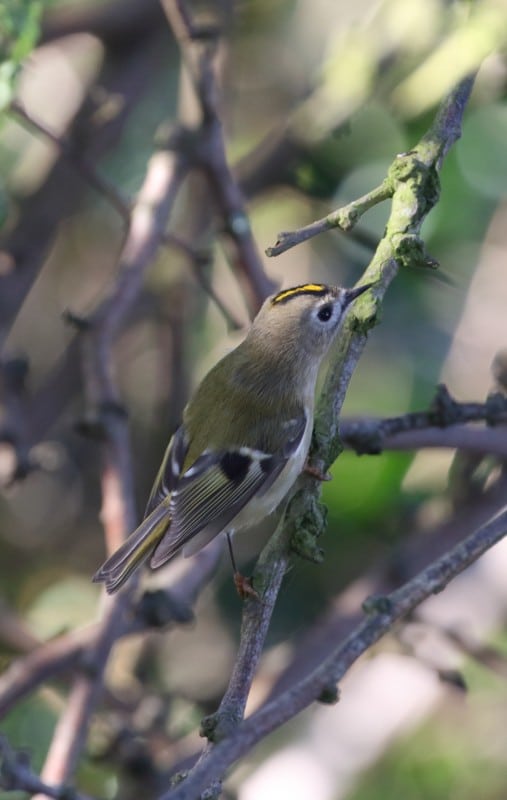
The Goldcrest, Europe’s smallest breeding bird. Often good numbers migrate to Holkham across the North Sea in October and November.
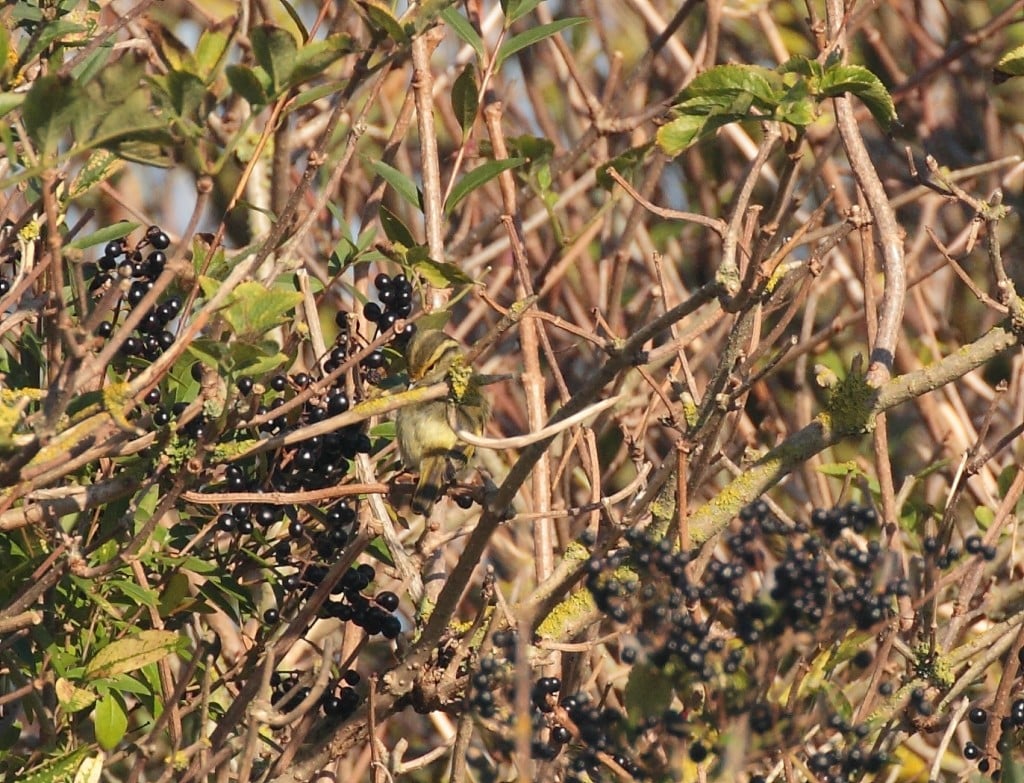
The Pallas’s Warbler; an even smaller species that breeds in the Russian Far East and ordinarily winters in south east Asia. Miraculously for a bird so small it regularly migrates to the UK in the autumn.
If we are lucky we might even see another similar species; the Pallas’s Warbler. Its range and distribution is similar to the Yellow-browed Warbler yet it is even smaller and even smarter in its colour and also more of a rarity. It can be a brighter green with wing bars being more yellow combined with a square yellow rump patch and a stripe down its crown. Like the Yellow-browed Warbler it too has become more frequent in recent years, yet it is still one of the ultimate prizes for the avid birdwatcher. Again, Holkham has a long association with the species, in fact within the county of Norfolk, we have attracted more of both species than any other site. The actual first UK record however was along the coast at Cley in 1896 when an old gun totting bird collector was highlighted to something unusual by his dog cocking its ears and peering into some coastal bushes. The old gunner followed his dog’s inquisitiveness and caught sight of a strange bird that he quickly blasted with his gun. This was common practise in those days, the rarer the bird the more lucrative it became. So Britain’s first Pallas’s Warbler was recorded and sold for £40, a pricey sum in those days. It took until 1951 before a second one was seen in the UK and then until 1958 before another was seen in Norfolk. Holkham finally recorded its first in 1974. In more recent years the species has gone to become far more regular, expected annually in October particularly if the wind blows from the north east. In 1982 some 14 were recorded at Holkham and Wells woods, a record number for anywhere in the British Isles at that time. Whilst only a single bird has been reported this autumn, if the weather is right we still have up until early December for one to arrive. So if you see a small group of tiny restless Goldcrests in a wood near you, be sure to look a bit closer, you might see a green and yellow surprise!
View all latest blog posts here.


